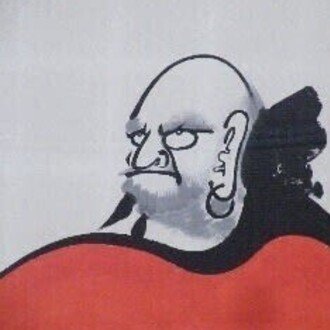
すべてが手作業、職人技の粋。おろし金製造・合田商店【これぞ! 職人技シリーズⅠ】 Everything is handcrafted and craftsmanship.
大阪市住之江区にある合田商店が製造する「銅手打ちおろし金」を取材させていただいた。
取材は2回目であるが、今回は株式会社アスライトのYou Tube チャンネル用の動画撮影である。「これぞ! 職人技シリーズ」の第一弾として紹介させていただく。
その内容は、下記のアドレスから見ていただけるが、その前に少しだけ内容を紹介する。
We interviewed "Copper grater" manufactured by Goda Shoten in Suminoe-ku, Osaka.
This is my second interview, but this time we are shooting a video for Youtube channel of Asulight Co., Ltd. Let me introduce this as the first video of "This is the Craftsmanship Series".
You can see the contents from the following address, but before that, let me introduce their work a little bit.
合田商店は住宅地の一角で、自宅の一階が工場(鍛冶屋)になっている。ここで合田八郎さん(67歳)がひとりで “おろし金” と “玉子焼き機” を製造している。今回は、おろし金にスポットをあてた。
おろし金の製造は5つの工程から成り立っている。すべての工程が手作業であり、熟練された職人技が必要とされる。まず「地抜き」から始まり、「錫(すず)引き」、「研磨」、そして次がおろし金の命である「目立て」という作業。最後に「成形」を施し完成である。
Goda Shoten is a corner of a residential area, and the first floor of the house is a factory (blacksmith). Here, Hachiro Goda (67 years old) manufactures "grater" and "egg maker" by himself. This time, We spotted a grater.
The production of a grater consists of five steps. All processes are manual and require skilled craftsmanship. First of all, the work of starting with "die cutting", "tinning", "polishing", and then "raising the blades", which is the life of the grater. Finally, it is "molding" and completed.
出来上がりまでの工程で、熟練作業の一つである「錫引き」は、100%に近い純錫を熱した銅板の上に乗せて溶かし全面に広げていく。その難しさは見ただけでもわかる。引いたあとは、気泡がたたないように丁寧に成らしていく。そして目立てをする前に、錫引きした部分を研磨する。
研磨がすむと、その錫引きしたところに目立てをする位置決めの線を引いていく。そして目立て作業に入る。
In the process up to completion, "tinning" which is one of the skillful works involves placing pure tin (nearly 100%) on a heated copper plate, melting it, and spreading it over the entire surface. You can understand the difficulty just by looking at it. After that, make it carefully so that air bubbles do not hit. Then, the tinned portion is polished before sharpening.
After polishing, draw a tinting line for sharpening the tinned area. And then we start the raising the blades work.
台に置いたおろし金に、目立て用の釘のような小さな彫刻刃の頭を金槌で小刻みに叩いていく。叩いた反動で彫刻刃を持つ手が自然に移動する。そしてまた叩く。この繰り返しで目立てができおろし金の刃になる。均等割りで間隔が詰まった刃が浮き上がっていく。まさしく職人芸である。
おろし金は周知のとおり両面に刃が浮き上がり、荒目と細目がある。関西は表になる方が細目、裏が荒目。一方関東は、関西の逆になっている。こんな道具にまで違いがあるようだ。はっきりしたことはわからないが食文化の違いからそうなっているようだ。
On the grater placed on the table, the head of a small engraving blade like a nail for sharpening is smashed with a hammer. The hand with the sculpture blade moves naturally due to the recoil. Then hit it again. By repeating this, you can sharpen and become a grater blade. The blades with evenly spaced intervals are lifted up. It is a craftsmanship.
As is well known, the grater has raised blades on both sides and has rough and fine patterns. The Kansai area is finer on the front and rough on the back. On the other hand, Kanto is the opposite of Kansai. There seems to be a difference in such tools. I don't know for sure, but it seems to be because of differences in food culture.

さらに驚かされたのが修理である。日本全国のプロの料理人から送られてくるようだ。たかがおろし金、されど・・・の領域を超えた逸品ということになる。見ると持つところにすべて刻印が押されてあった。何十年も使われている風格が滲み出ている。
What was even more surprising me was how he repairs. It seems to be sent from professional cooks all over Japan. It's a grater, but a gem that goes beyond the realm of ... When I saw it, it was all engraved where I had it. The personality that has been used for decades is exuding.
さて、YouTubeは、下記のアドレスから視聴ください。
https://www.youtube.com/watch?v=-8AbsEpHcao
Now, please watch YouTube from the following address.
https://www.youtube.com/watch?v=-8AbsEpHcao
レポート & 写真 / 渡邉雄二
Reported & Photo / Yuji Watanabe
いいなと思ったら応援しよう!

